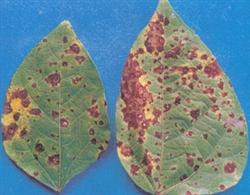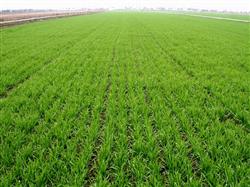High yield technology of mung bean is the key.
The selection of excellent varieties is an effective measure to increase production. Suitable varieties should be selected according to local natural conditions, soil fertility and commodity value. Due to the short growth period and long sowing period of mung bean, the correct sowing technology can be sowed in spring or summer. Spring sowing should be in mid-May and summer sowing before July 5. There are three sowing methods of mung bean: strip sowing, hole sowing and sowing. But most of them are broadcast on the air. Strip sowing should prevent the covering soil from being too deep, the seeds too thick and missing sowing. After emergence, it is found that there is a phenomenon of missing seedlings and breaking seedlings, and the replanting should be completed within 7 days. Because the yield of mung bean is composed of three parts: total pods per unit, seeds per pod and grain weight. The yield is closely related to the planting density. Therefore, the planting density of mung bean should be determined according to the characteristics of varieties and soil fertility. In general, we should master the principles of dense early-maturing varieties, sparse late-maturing varieties, dense upright type, semi-trailing type, thinner type, sparse fertile land, dense thin land, and sparse early species and dense late species. The fertilization principle of mung bean should be based on organic fertilizer, supplemented by inorganic fertilizer, mixed use of organic fertilizer and inorganic fertilizer, adequate base fertilizer and proper topdressing. Fertilization technology: mung bean has a short growth period, strong barren tolerance, and its root system has the ability of symbiotic nitrogen fixation, so there is often no fertilization in production, but in order to improve the mung bean yield in medium and low yield plots, more fertilizer should be applied. Generally, about 10 kg of fertilizer diammonium phosphate or nitrogen, phosphorus and potassium compound fertilizer is applied per mu. In the hilly thin land with poor soil fertility and no application of base fertilizer and seed fertilizer, after the first compound leaf of mung bean is unfolded, combined with mid-tillage, urea per mu can be topdressing 3kg, or compound fertilizer 8kg / 10kg. The practice of continuous cropping of mung beans in crop rotation. Because continuous cropping has many diseases and insect pests, poor quality, and even inhibit the development of rhizobia due to the reproduction of harmful microorganisms, there is an agricultural proverb that "bean fields are adjusted year after year, and the yield is high year after year." At the same time, mung bean is also an important fertile crop and an excellent predecessor of cereals. Therefore, in order to grow mung bean, it is necessary to arrange the land reasonably and carry out crop rotation, preferably with cereal crops such as corn, sorghum and wheat, generally 2-3 years apart.
- Prev

Control methods of mung bean leaf spot
The main results are as follows: 1. Select disease-resistant varieties and plant them closely in a reasonable way to ensure good ventilation in the field. 2. Strengthen field management and pay attention to draining or dispersing soil moisture after heavy rain. 3. At the initial stage of the disease, 70% mancozeb 500x solution, or 41% special effect germicidal king 2000 times solution, 20% Landy 500x solution were selected for spray control. Spray once every 7 to 10 days, even spray.
- Next

Disease and pest control of wheat
Wheat spiders [distribution and damage] there are two main species of wheat spiders, the wheat round spider [Penthaleusmajor (duges)] and the wheat long-legged spider [Petrobialatens (Mullen)]. The former belongs to the family Acaridae, the latter belongs to the family Tetranychidae. All wheat areas are distributed across the country, with wheat long-legged spiders in the north and spiders in the south.
Related
- The first cup of black tea in spring, the flavor and history of tea gardens in Kenya, Africa
- The computer can not only choose potatoes, but also grow tea rice. AI will grow winter oolong tea champion.
- It is not only the inflated tea bitten by insects, but also engraved with the four seasons tea in Beipu.
- The Oriental Beauty Tea Festival in Zhuxian County takes the stage at the weekend to experience the plus-size feast of oil tea.
- & quot; Oriental Beauty Tea & Exploration of Emei in Hsinchu, the hometown of quot;
- The new variety of strawberry "Tainong 1" dessert is the first choice with mellow aroma. Crimson gorgeous
- History of Tea in Taiwan: from Wild Inner Mountain to Export Tea Garden
- Two types of Taiwan Oriental Beauty Black Tea won the British three-Star Award for Childhood Tea Xiang Zhang Jiaqi changed from pilot to champion tea maker.
- Banana species and varieties: the planting history of Taiwan Xianren banana and dwarf banana is long, is banana disease resistant?
- Coffee planting Technology: Qianjie Coffee from Seedling to harvesting

